Nearly half of American adults have high blood pressure, according to the American Heart Association. Unfortunately, many of them are unaware they have it or of the damage that it can cause. High blood pressure is often called “the silent killer”, because it usually has no symptoms. Left untreated, high blood pressure leads to possible heart attack, stroke, and other health problems.
Checking your blood pressure regularly is necessary to avoid these risks. A healthy diet and lifestyle go a long way to keeping your blood pressure in the normal range, but even the healthiest people can be affected. If your blood pressure is regularly above 120/80 you should pay attention, and above 130/90 is considered high blood pressure. Blood pressure over 180/120 is considered a hypertensive crisis and needs immediate medical attention.
Everyone should commit to keeping blood pressure in a healthy range. This includes a healthy lifestyle and possibly herbs that help keep blood pressure low. Sour Tea, made with Hibiscus sabdariffa, can be a good component of your plan to avoid high blood pressure or bring down blood pressure that is already too high.
What Is Sour Tea?
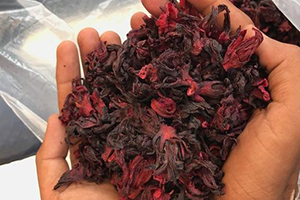 Hibiscus tea, also known as sour tea, is made with the dried hibiscus flower. The flavor of is tart and fruity and it is delicious either hot or cold.
Hibiscus tea, also known as sour tea, is made with the dried hibiscus flower. The flavor of is tart and fruity and it is delicious either hot or cold.
If you need to balance the tartness, you can sweeten it with a little honey, maple syrup, stevia, agave, or other natural sweetener.
If you don’t like the flavor of hibiscus tea, you can also use an herbal blend that contains hibiscus. I enjoy a blend of hibiscus, rose hips, orange, and other fruit flavors. It is flavorful, slightly sweet and mildly tart. The blend is rich in antioxidants, vitamin C, and anti-inflammatories.
Related: 23 Survival Uses for Honey that You Didn’t Know About
Where Is the Evidence of Hibiscus Tea Benefits?
A scientific study published in the Journal of Nutrition showed that three cups of hibiscus tea daily lowers blood pressure. Participants who drank the tea for six weeks saw a reduction in blood pressure equivalent to a popular blood pressure drug.
While hibiscus tea alone may not be enough for severe cases of hypertension, it can be a solution for patients experiencing a mild elevation of blood pressure. Patients who need a large reduction in blood pressure can use it in conjunction with other herbs or drugs. Check with your doctor for advice.
Other Health Benefits of Hibiscus Tea
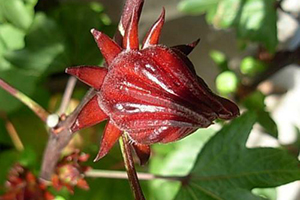 There is scientific evidence that Hibiscus tea has additional health benefits, especially for the heart and liver. It is beneficial for diabetics and in fat metabolism.
There is scientific evidence that Hibiscus tea has additional health benefits, especially for the heart and liver. It is beneficial for diabetics and in fat metabolism.
Here are some of the documented benefits of Hibiscus Tea:
- Hibiscus tea helps lower blood pressure
- It is packed with antioxidants that prevent free radical damage to the cells
- Lowers LDL cholesterol and triglycerides, known factors in heart disease
- Promotes a healthy liver and helps in detoxification
- Promotes weight loss
- May reduce the growth and spread of cancer cells
- Hibiscus tea has antibacterial and antiviral effects
- The tea is calming and helps reduce depression and anxiety
- Improves digestion
- Boosts the immune system
- Helps the skin heal.
Hibiscus tea is caffeine free, so you can drink as much as you like with no worries. In my opinion, the best reason to drink Hibiscus Tea is the delicious and refreshing flavor. The health benefits are a wonderful bonus.
Side Effects of Hibiscus Tea
Hibiscus tea is safe for consumption, but it does have some effects on the menstrual cycle. Because of this, it is probably best that pregnant women, and those looking to become pregnant, avoid it. It is mildly diuretic. Discuss your herbal use with your doctor if you are taking prescription medicines.
How to Make Hibiscus Tea
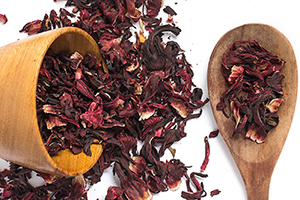 To make a pitcher of Hibiscus Tea, I use ½ cup of dried hibiscus petals or 2 cups of loosely packed fresh petals. Bring 2 quarts of water to a boil, turn off the heat and add the hibiscus petals.
To make a pitcher of Hibiscus Tea, I use ½ cup of dried hibiscus petals or 2 cups of loosely packed fresh petals. Bring 2 quarts of water to a boil, turn off the heat and add the hibiscus petals.
Let the tea steep for 10 to 15. Strain the tea, sweeten as desired, and drink hot or iced.
For 1 cup of Hibiscus Tea, brew 2 teaspoons of dried hibiscus petals in 8 ounces of boiling water. Steep for 5 minutes, strain, and enjoy. Longer steeping times yield a more intense flavor.
Many people enjoy adding a cinnamon stick to the tea while it brews. I enjoy a squeeze of lemon or lime, and sometimes a few mint leaves.
Related: 10 Health Benefits of Cinnamon That Surprised Even Us
Grow Your Own Hibiscus
Hibiscus shrubs grow in USDA Zones 4 through 11. They prefer warm weather and only a few varieties can survive in the colder zones. However, they can also be grown indoors. There are over 200 species of hibiscus, but Hibiscus sabdariffa is the variety that has been studied.
To harvest hibiscus petals for use in Hibiscus Tea, pick the flowers in the morning when the flowers are newly opened. Remove the petals from the rest of the flower and use the fresh petals for making tea, or dry them in a dehydrator for future use.
You may also like:
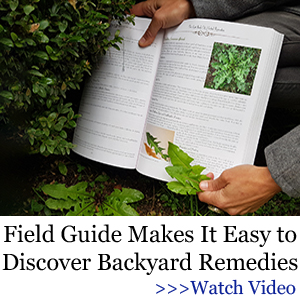 How to Make Cabbage Bandages to Treat Inflammation and Joint Pain
How to Make Cabbage Bandages to Treat Inflammation and Joint Pain
This Bug Will Kill Most Americans During The Next Crisis (Video)
10 Reasons Why You Need to Make Room for the God of Fungi in Your Backyard

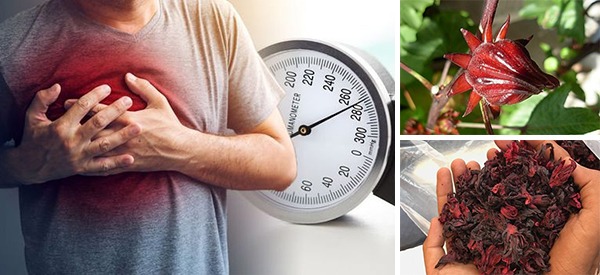













Another wonderful article and is so true! Thank you, as always, for sharing all these great ‘good news’ articles. You’re the best!
Good article. If your systolic BP is 140 or over the Docs freak out. Oddly enough, blood pressure drugs generally achieve an 8 point drop in that number, so it seems logical that if you are 150 and only lower it to 142 you would still be in trouble, but studies show that even that modest decline is effective in reducing the risk of stroke. The studies on hibiscus are small but good, so a 7 point decrease from hibiscus tea is very positive for your health. Especially if you lose weight (if you need to) and clean up your diet, which can be good for a 10 point reduction, says the guy with a drink in his hand and an extra 20 lb under his belt.
Which is exactly what my hubby had. The meds didn’t bring his BP down to anywhere near ‘normal’ but the Dr was happy.
I wasn’t but I’m no Dr. He took himself of the meds at the beginning of last year and his BP is still the same as if he had been on them. Now I’m trying the alternatives on him; I’ve just got to find something he’ll take regularly and likes. He can’t take tinctures so it’s teas or something I can dry and make tea from or he can eat out of hand.
You should be able to find Hibiscus Tea (Sabadilla type) in the Spanish/Latin section of the grocery until you can grow your own. Locally ours is Badia brand, if your store doesn’t have it, ask them to order for you.
It is not the petals of the flower that are used but the calyx. That is the dark red spiky looking part that forms a couple of days after the flower. It is actually the seed pod if it is allowed to fully develop but it is usually picked in the first week after flowering. And you need a few plants to produce a years supply as they are mostly grown as an annual each summer.
I’m growing them again this summer.
The hibiscus plant in our yard is at least 40 years old. I think it was one of the early plants my wife planted when we moved here 50 years ago. They apparently like SoCal weather. (if they don’t burn up in a fire.)
It isn’t just any hibiscus plant. The one used for HBP is Hibiscus sabdariffa, the Rosella/Roselle plant which they harvest the calyx for jams and jellies.
https://en.wikipedia.org/wiki/Roselle_(plant)
Also, there are a number of other plants that are helpful. Hawthorn berries, leaves and flowers dried and made into tea help as does an Asian plant called Gynura procumbens, also called Longevity Spinach which one Dr said to eat 6-7 leaves each day to equalize your BP. As with all things, some plants work better for some people so it’s good to have a few strings to your bow. There are some interesting results on Google Scholar.
Ginny: Yeah, that’s the best tasting, the red leafed. Very good in Asian cooking, as well. In my part of Arizona, it’s iffy if it will survive winter, but we’ll see. The Thai variety produces a lot more calyx than any other. One sister in Pennsylvania raises Rose of Sharon for tea but even with heavy wiring around it, some years the deer eat it to the ground. Lucky her, they have small cranberry bogs in the valley and up in the mine spoils, as well as acres of blue berries and wild tobacco.
Hawthorn is excellent in a hidden garden. But, the only time I experience BP is before a bronchial asthma attack. Then, I can use medicated Scotch snuff, home-made, and that knocks out the asthma attack.
A major excitement–at least to agronomists and us desert rats–Australian limes are being crossed with citrus to produce drought-proof and salt-proof varieties of oranges and so on. Wow! And, Queensland (banana benders…? 🙂 variety Canna lilies are moving into the market, at last. We have Indian Shot, but they don’t thrive in our heat. niio, walk in beauty
Trying to get hold of the Thai variety but having no luck atm. Will keep trying though, someone must have it locally. Haven’t tried Rose of Sharon. Your sis is lucky to have the cranberries and blue berries, both of which I love but really can’t grow here although I try the blue berries every couple of years. Just too hot over summer.
What is the Scotch snuff? I’ve never heard of that. A local boy suffers from asthma and I’ve often wondered if there is something that might help in an emergency.
As for the finger limes they are certainly different and very prickly. The little juice sacs inside come out like little pearls if you peel the fruit and some of the crosses have been really tasty but I haven’t seen a large tree like an orange, all tend to be small and staggly although I haven’t checked out the new varieties for a few years. You obviously have some knowledge of Australian slang to know Banana benders LOL. I’m a Sand Groper being from WA.
The QLD arrowroot is supposed to be just like normal arrowroot and it doesn’t mind the heat. Quite large tuber root about the size of a cricket ball, quite tall about 6ft and an insignificant red flower, not at all showy like the Indian Shot. It does okay here although the leaves get windburnt every now and then. Where abouts are you.
Going to be hot today 40°C and 46°C by Sunday, but with a bit of early watering each morning everything seems to survive most summers.
Ginny: As folks say in English, top of the morning, love (not quite certain what that means, but it sounds cool :). this is south-central Arizona in the San Pedro river valley. There was thick fog over the river yesterday morning, which means the river may (but not likely) actually had water in it! This is an old copper mining area and the soil is adobe/caliche/sandy gravel brickwork. One town in the county (Anasazi, a single apartment building, Casa Grande, AZ) made of it was abandoned around 1200 AD and is still standing. The walls, rising 3 stories, are raw adobe puddled over lathes, not made of brick.
I’m having a lazy day and didn’t get up till 5 🙂 I know the crap about a long haul to the doctor’s. Mine is almost 40 miles, one way, so I make the most of it. Starbucks (a cup of mud and after stopping at several, often a quarter truck load of coffee grounds to turn our adobe/sand/gravel brickwork soil into black topsoil), shopping in big stores (we have only tiendas, small stores, locally), and visit with folks. The winter garden is doing all right, mostly black radishes and cole crop. The mesquite are finally losing their leaves, and the rains were good, for here, meaning plenty of prickly pear pads and fruit in summer. If you juice prickly pear, remember, half a cup juice to 5 of water or other juice. Use it like a concentrate. Prickly pear is one of those eat-your-medicine plants. Be warned, raw pads are better than exlax 🙂 Cooked, here, they’re used in most everything with eggs or meat.
Scotch snuff is finely ground tobacco. Medicated snuff has peppermint oil (which usually knocks out an asthma attack) and camphor. Both fight swelling in the throat and the tobacco forces sinuses to drain out, not backwards and into the lungs. This is where herbal cigarettes came from, menthol was prescribed for asthmatics and cloves in tobacco for people suffering bacterial infections of the lungs. Tobacco is very antibacterial and somewhat antiviral though it’s a hot herb, and not recommended for children, but that’s how I started smoking at age 4. It was the only thing we had to stop asthma attacks from killing me. They tried the medicated, but tobacco can feel like it’s scorching hot (a sign of raw flesh from an infection or nasal worms (the latter once common in Europe)).
Word on tobacco sites is Australia outlawed tobacco. Why? According to modern studies, there’s nothing wrong with it, just do not inhale any smoke from anything on a regular basis. That causes COPD and an enlarged heart. Tobacco is also primary suicide prevention, calming the nerves, and making one think. At one time, most militaries (except for Nazis, which started the anti-smoking thing) haded out tobacco or cigarettes as part of a soldier’s rations for that reason. College students are major users of nic patches because it helps them to memorize when studying and when they’re tested. Nicotine, alone, has not been found to be harmful or be addictive (but, there is plenty of other things in cigarettes that are, like bleach used to whiten paper).
U of Davis, Kali-fornia, is cross breeding AU limes with citrus to create a drought-proof, cold tolerant orange. They were primary in developing an olive that can produce in Zone 7 and are working on better cold tolerance in them, as well. I’d like to get one of the limes, just to see how well it does in our caliche/adobe soil and heavy winds. Canna lily root, AKA QLD arrowroot, is a dulce, a food plant. We used to just peel and slice the roots, then dry and grind them. The best glass noodles come from pure starch and water. The grandkids call them invisible spaghetti and giggle when they eat them. Shoots are good and the leaves eatable and used in cooking to wrap Mayan-style tamales. Seeds are ground and added to flour.
Had a mate down under in Oz, love. The lovely was a bit of a gullah but smart, crackers. Always bagging the rotting liberals (here, conservatives) and the those drongo politicians in Canberra. How we met, I write and edit, and do research for writers. At the time I had started a series on a CIA agent who had rescued a small boy who’s father was from outback, a cattle station up in the Snowy Mtns. But, his mother’s father was Green Party and a neonazi. The old man had his son-in-law to create suitcase bombs for Harquanni terrorists in a hidden lab in S. Africa, and the agent had to track them down. He did a wet job at the lab, wound up in New York and found the boy, then they had to run from foreign agents and home-grown terrorists in the Agency. The kid was 7, a genius, a spoiled, wealthy (me mum’s got big bickies 🙂 foul-mouthed but teachable, especially after the agent informed him, he would be in a body cast if he didn’t stop trying to get them killed by insulting people. The brat has a photographic memory. When he’s in a trance, memories in foreign languages show where the bombs had been place. Because of that, and an unwanted emotion like sympathy, the agent takes the kid and runs from one nation to the other. the White House (under Obama, then) orders him to take the kid to his grandfather, the politician in Canberra, not the cattleman. But, if he does, the boy is dead.
The older sister is a guardian of one burial site on the Demons Road. The soil is thin, sour deep sand and swamp. Two weeks of no rain, everything starts to dry out. Wicca folk will not travel through the valley after dark. Word is, too many spooks, demons (in Native America, all ghosts are demons), Owl Men, and so on. A hanging oak, cat demon (mountain lion) hangs out near the hanging oak and if you see it, you’re gonna die. I saw something 4 times in one winter and almost died each time. Like a friend said, heck of a waste of a good whiskey drunk. What can I say? It’s home, at least for many in the family. In the old days, pretty much everyone in the valley was a ‘criminal’. People told to leave their towns because of crimes. BTW, tobacco smoke is supposed to force demons to run.
Been fun having a bit of a yam, but time to get to yakka, what. I dug a new garden trench (the Tohono friends say, get under the caliche and add logs and brush, and got to take the old ute up and about to grab some). Most all y’all desert rats here throw it back in the alley for us garden folks and happy campers (drunks who like a fire at night to party 🙂 and chew the fat over a few brewskis and a little jug of Mexican lighter fluid (mezcal or cowhoof (bootleg tequila or mescal). Mescalero Apaches still make the hottest. Urban legend, always aim the jug away from you when opening because it can catch fire on contact with air. 🙂 niio!
Is your home made Scotch snuff from wild tobacco, the traditional one is Nicotiana rustica, and have you ever tried smoking mullein for asthma/bronchitis?
Mike: ‘Morning to you! Wivian tobacco, Rustica, grows wild all over in washes and swales, wherever it can get shade and moisture. It’s a great herbal, but smoked? Even stoners don’t puff a lot. Yeah, it works in the medicated scotch snuff. Just, if you do use it, try to get a domesticate variety of Rustica. native Seed search carries most Pueblo and Tohono varietals. Except for Glauca, tobacco is a very hot herb, and wivian is much stronger. Not a lot to the plant but it can survive winter down in the 20s F. Good for colds, as well, but ginger is much better. Speaking of ginger, javelina stole some, but only up to the root zone of the moringa (AKA horseradish root tree 🙂 They avoided the radishes (AKA German horseradish root, but the tops are OK), cabbage, and brussels sprouts because they’re mulches with oleander leaves. niio
Mike: Yes, I use mullein, but usually as a filler with tobacco and lobelia. to make medicated scotch snuff, one ounce more or less powder tobacco. it should be very dry to do this. equal parts camphor and peppermint oil, warm the oils and remove from heat adding tobacco until all the oils are absorbed. In a pinch, peppermint oil and Vicks, which is a natural med. The mix will look moist, and if kept in a tight jar in the dark can last for years. Any rustica is powerful.
I’ve worked with plants all my life, and one of my interests has always been traditional Southwestern herbal remedies. I have read a lot on the subject, and use some of what I’ve learned, but you are immersed in it and I love your posts, especially when you get to rambling a bit about your experiences. Thanks!
No es nada. https://www.legendsofamerica.com/na-remedy/ This is a good herbal and I have something, somewhere, on desert remedies. niio
Very true! Roselle is a variety for us in Zone 9 and 10. http://gardeningsolutions.ifas.ufl.edu/plants/edibles/vegetables/roselle.html Much thanks! niio
This is from the Wikipedia article that Ginny referenced:
“Herbal medicine (high blood pressure)[edit]
Although a 2010 meta-analysis using 14 databases and hand searching journals conducted by the Cochrane hypertension group concluded “No studies were identified that met the inclusion criteria”[20] a more recent meta-survey (2015) in the Journal of Hypertension suggests a typical reduction in blood pressure of around 7.5/3.5 units (systolic/diastolic).[21]”
Notice the verbiage: “a more recent meta-survey (2015) in the Journal of Hypertension SUGGESTS a typical reduction in blood pressure of around 7.5/3.5 units (systolic/diastolic)”.
I would SUGGEST that if you suffer from high blood pressure, you talk to your doctor before going off what he has prescribed and starting a regime of hibiscus.
I will repeat what I have said in the past: There is no medical magic bullet.
Maybe I shouldn’t have quoted Wikipedia, my bad, although it was more to show the botanical info than the medical side 🙂
Anyone seeking alternatives to prescription meds do as LCC suggests and consult a medical professional since I am no Dr.
However, anyone wanting some medical research results that MAY be of use can search Google Scholar
https://scholar.google.com/
or possibly
https://doaj.org/
where you can get some results from scientific trials, mostly conducted on rats but some are human based. Many will just give an extract of the trial but some will give you the full pdf. If you’re not into the tech stuff go to the discussion and conclusion at the end for a rundown of the overall results. NO-ONE will come out and say this CURES anything so don’t expect anything definitive. They are just covering their backsides but most will say what the results MAY indicate.
It is worth noting that many of these herbals are used extensively in less affluent societies purely from the lack of medical facilities or pharmaceuticals they have available, situations which we could all be reduced to and more in a SHTF scenario. For me, it pays to be informed on alternatives that MAY help my family if everything goes pear shaped.
The other side of the coin is that in days past these herbals weren’t necessarily eaten as medicine only but as just another food source that was added to the daily diet to stave off starvation. Over here Roselle/Rosella has always been grown and used as jams throughout the year or dried and used as a summer drink or tea, not as a medicine. No-one knew it’s possibly health benefits but if it made you feel well it was a bonus. You don’t have to have a medical condition to enjoy a nice herbal tea. Many also don’t interfere with prescription drugs but it is often best to ask your health care professional just to be sure. Since I avoid seeing Drs in general I tend to just try any herbal tea I like. My experience is that most are running a business and they want me to continually come back. It’s a 150km round trip – I think not.
The Gynura I mentioned in the original post we use as an Asian green in stirfrys and soups since it just makes sense to use what I have growing. It tastes a bit like a soft silverbeet leaf, maybe a bit sweeter, a little furry and much smaller so I’d use a dozen or more leaves for the two of us.
Ginny: Unfortunately, too many doctors are in it for the bucks, I agree. However there are some who actually want to help people. Finding those gems is the hard part.
When I was younger and a lot dumber (not that I am that especially bright now, but having made as many mistakes as I have in life, and slowly catching on, what passes for wisdom these days is just lessons learned in the school of hard knocks.) I thought a big buck profession was the way to go to make money. I finally realized that the way to go was to find something that you liked to do that kept a roof over one’s head and beans on the table. Success would come because if you enjoyed what you were doing, it really wasn’t work. The hard part is finding what you like to do that also provides enough income to provide the basics. The poor starving artist is a tough gig.
I also agree that having knowledge of herbs and processes that don’t require a doctor’s permission slip to acquire and that have some helpful health features is valuable knowledge. We all know that if the end of the world should arrive, driving down to CVS to get a ‘script filled is going to be a vague memory.
A meta survey is just a history of older studies. There have been a few recent double blind placebo controlled studies (almost unheard of for a herbal product because there is no big pharma profit potential) finding a reduction in systolic pressure by 7-8 points, a number that significantly reduces stroke risk. Typically a RX med for BP lowers systolic about the same amount, leading Docs to often prescribe multiple medications to try for a better result. There is no good answer to how Hibiscus tea reacts with prescriptions, it has never been studied. But, the tea is used a lot around the world and no problems have been noted with it interacting with any drug.
I also believe there is no magic medical bullet, but I’ve found a couple non RX remedies that work, Echinacea extract 2 capsules a week prevents colds and flu, and oil from 100% wild caught cold water salmon offers significant relief from osteo and rheumatoid arthritis for a lot of people. The Roselle tea I ordered is coming tomorrow, I almost never try stuff like this but me and the Sweet One are going to put it to the test.
I’ve had hibiscus tea before…it has a lovely citrus flavor. I usually sweeten it to cut the acidity and enhance the flavor. I’m sure you will be pleased with the taste, and hibiscus I believe has Vit C, which is always a good thing.
On the flip side, if your BP is too low, you might want to avoid hibiscus products if it’s shown to lower BP that much.
Sometimes information flipped on its head can be just as useful to know.
Thank You Ask a Prepper what the name of the best place to buy Hibiscus from? Thank You My first time to buy any
If you mean hibiscus the plant, I would check with your local garden nursery to find species that will grow in your locale. If you mean as a tea or infusion, go on line, type in hibiscus tea or hibiscus infusion and see what results you get. I suspect the universal supermarket, Amazon has a variety of both tea and infusion so you can read the reviews and see what you think.
Fantastic article. Thank you. I grew up drinking Hibiscus Tea. It was part of our daily life. We soaked the Hibiscus overnight instead of boiling it. I releases all its nutrients without the heat. Just a tought.